
The book with religious or ecclesiastical content certainly has a long history. The production of the book itself was already in the early years of its dissemination concerned with theology and religion.
Today, books on church and theology continue to cover a large part of book production, approaching their subject matter from many different perspectives. After all, the subject itself covers almost limitless aspects: literature, archaeology, folklore, art, history, architecture, music, poetry and so on.
Heading into Holy Week and Easter, and as the days for a little more reading are favorable, publishers have books with a “timely” content to propose. Books that will not only be an enjoyable read for the leisure time of the days, but within their pages the reader will find information, approaches and references that highlight the spirituality and ritual of the days.
The publication Flower Bouquet for the Holy Week (Artos Zois publications) penned by the professor, author, intellectual and chairman of the election committee of the NLG, Stavros Zoumboulakis, is addressed, as he claims in his preface, “to those within and those without, those near and those far away“.
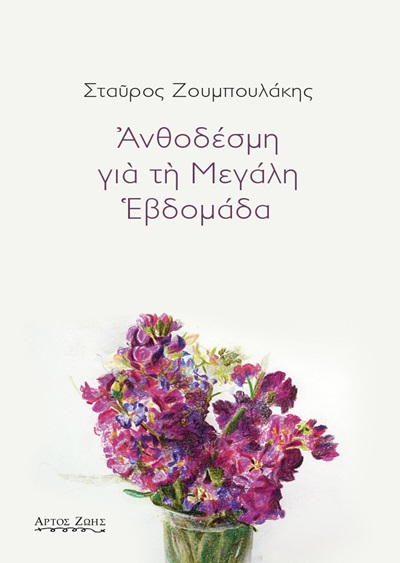
And how else could it be since the book is a hymn to love, repentance and sacrifice.Timely as ever, it denies the manifestations of revenge on the long-suffering Jewish people even if them manifestations have been written in sacred texts for hundreds of years in the devotional verses of Holy Week. Were these not ideological licenses for the long process of expulsion of the Jewish race? Was not even the Holocaust itself based on the same texts? Negative records bring long-standing passions and unbearable lamentations. This is exactly what Christ came to heal by sacrifice on earth.
In any case, the book attempts to interpret individual texts of the ritual of the Holy Week worship rites. The texts are so overwhelming and further interpreted by the author of the book that the magnitude of the love and ethology they carry is almost overwhelming.
Stavros Zoumboulakis could, of course, shock us with any story he would decide to tell us. All the more so when the report is made on the occasion of such an event, the supreme act of God’s love for man. Concepts and feelings that sooner or later we will all experience experientially on the occasion of the loss of loved ones…
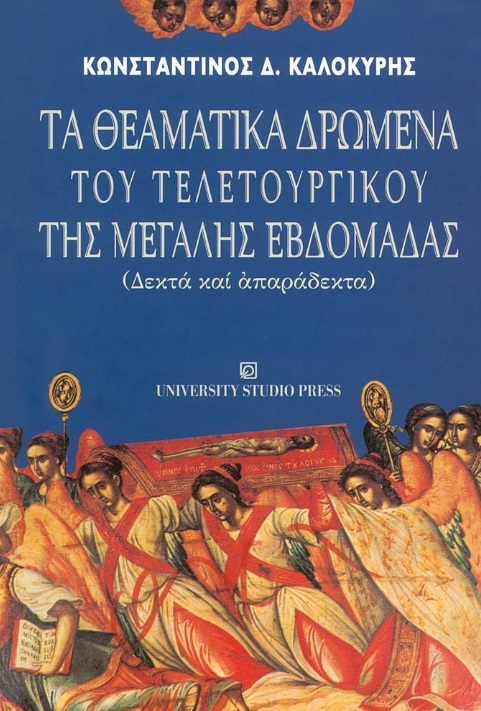
The archaeologist – Byzantinologist Konstantinos D. Kalokyris presents the extremely interesting but little known history of the conditions and circumstances that established the form of the Holy Week services, in the form that they largely still have. The Thematic Dances of the Holy Week Ritual (Acceptable and Unacceptable) – (University Studio Press) is a work that has been based on the sources of Byzantine literature and archaeology as well as on the studies of Greek and foreign researchers. The symbolism of the Holy Week liturgical services is “deciphered” through the influences and the emergence of the reality in which they were formed.
A guide to the services of the Holy Days is the Short Itinerary of Holy Week – (Porphyra Publications). In the pages of the book, the theologian Fr. Alexander Schmemann unfolds the spiritual substance of the mysteries of Holy Week, from the glory of the entrance into Jerusalem to the humiliation of the Crucifixion and the Resurrection.
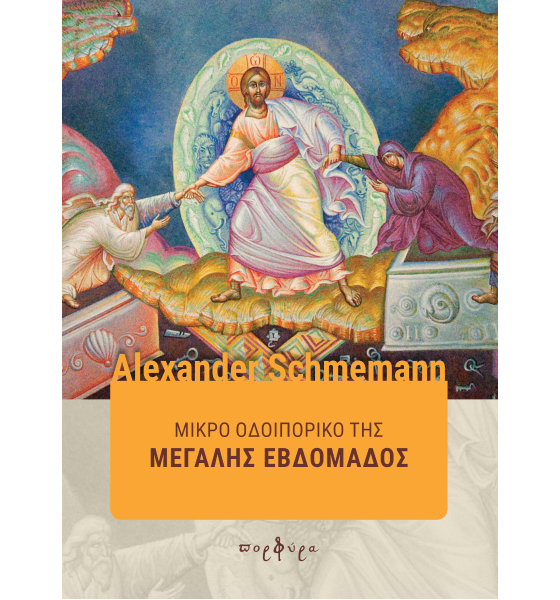
For those interested in a more academic approach to the phenomenon of Orthodoxy, the work of Fr.Nikolaos Loudovikos Orthodoxy and Modernism: Byzantine Personalization, State and History, in the perspective of the European future (Armos Publications), is the ideal reading of the period. Inspired by the most recent academic debates on identities, Fr. Nikolaos Loudovikos tries, even briefly, to answer questions such as: “What is the possible place of the Orthodox tradition and its glorious but ephemeral Byzantine version in the future European identity? What is the Greek Orthodox identity, in communion with the coming European identity?”

Regarding the Lenten fast, we all follow it more or less, even on the days of Holy Week. It is now part of the tradition of the days. But a more substantial aspect of fasting is referred to in the book by Fr. Callistos Ware , From the Cross to the Resurrection (Porphyra Publications). The author immerses us in the mystery of the anticipation of the “journey” of fasting and the joy that the Resurrection of Christ brings.

The little-known history of Byzantine monasticism is approached by the Byzantinologist Alice-Mary Talbot in the publication Varieties of Monastic Experience in Byzantium 800 – 1453 (University Studio Press), edited by Alexandros Alexakis. It highlights the role of monasticism, monasteries and monks for the local lay population, for towns and villages. Male and female monastic communities, but also the monasteries of eunuchs, hermits and monastic communities make up the whole of the monastic experience in the Byzantine years in which thousands of monks participated.

Savvas Agouridis was one of the most influential figures of theology in Greece during the second half of the 20th century. In his work The Sermon on the Mount (published by Artos Zois), the great theologian annotates the Christological text, highlighting both its messianic and eschatological content. In the words of the scholar himself: “All that is said about Christian discipleship, about righteousness, about the future, etc., presupposes how the old world has died and a new world has begun.”
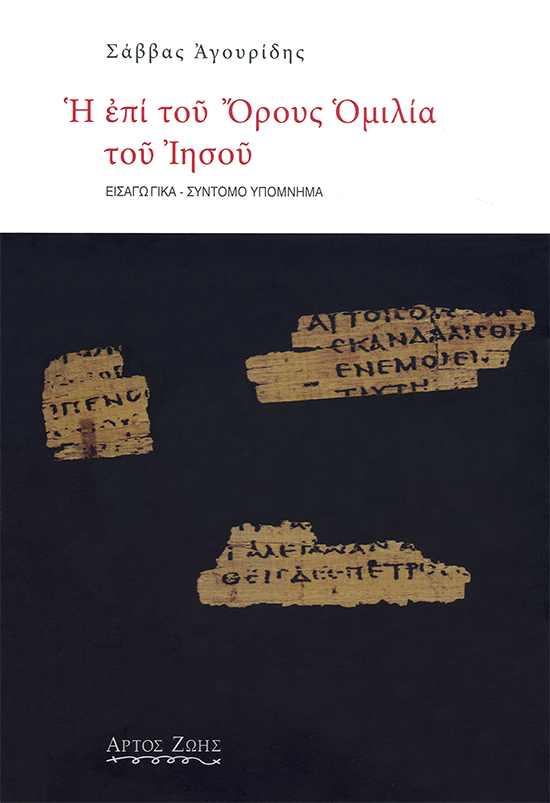
In his work Psychoanalysis and Orthodox Theology (Armos Publications), Fr.Nikolaos Loudovikos brings together three experimental, as he describes them, texts that promote a theological reading of the psychoanalytic event. Themes of desire, universality and eschatology are susceptible to bring together fields such as philosophy, psychoanalysis and, of course, theology. Fr. Nikolaos Loudovikos emerges as an erudite scholar, in whose writings one finds references from Costis Palamas to Levinas and from Castoriadis to Jung.
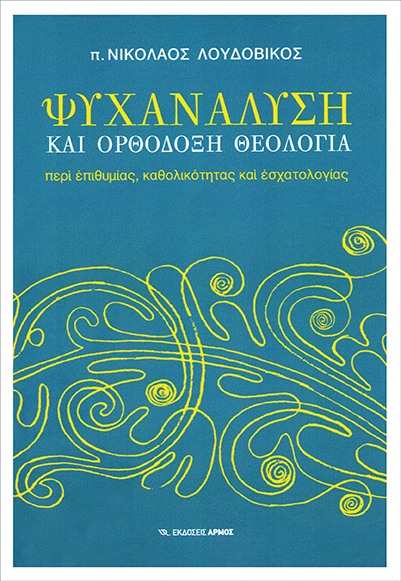
Between theology, literature and philosophy lies the book God is to blame for making the world so beautiful. Allegories from Kazantzakis. (Kedros Publications). The author Vangelis Raptopoulos “wanders through the Kazantzakis universe” and transcribes 259 allegories from his work, taken from the monks of Mount Athos, Eastern philosophy, Jewish tradition, history, etc. Each of the short allegories encapsulates Kazantzakis’ thought, composing a postmodern novel to which the reader wants to return.
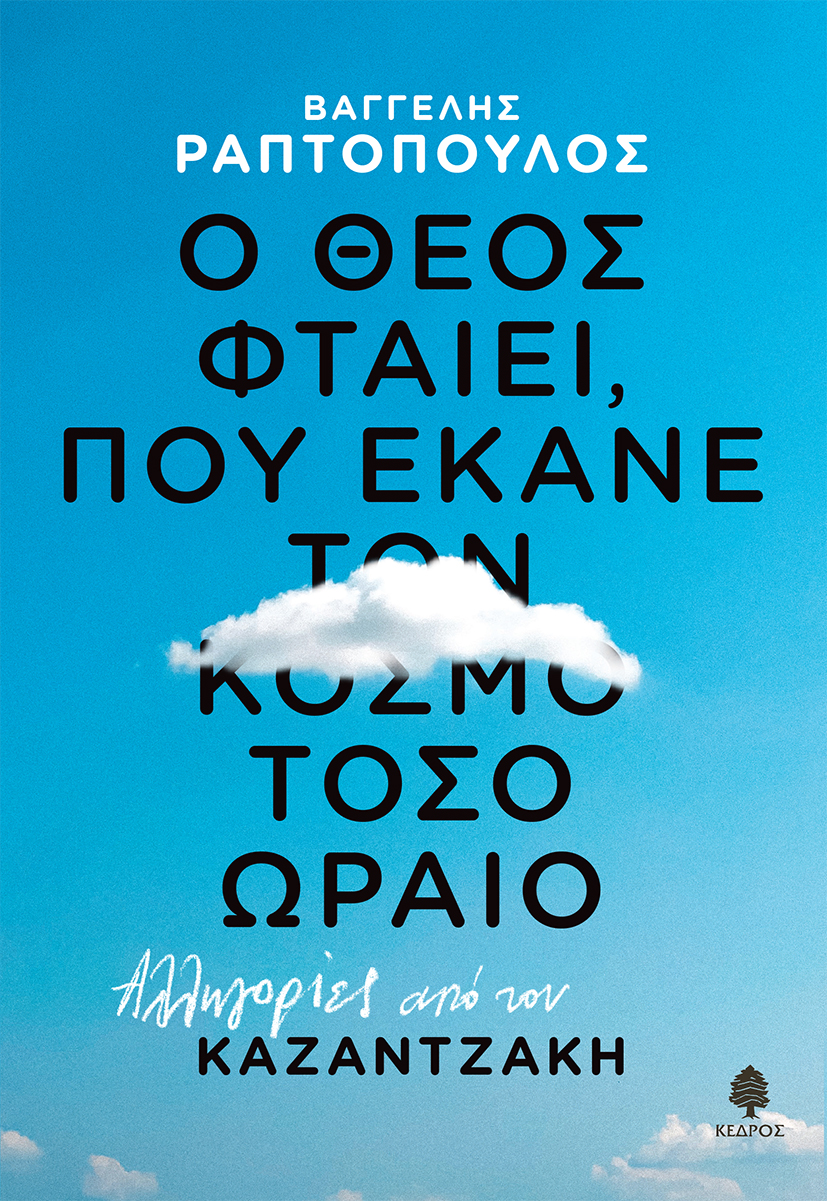
– “When I’m in the mood, I play, I sing, and I dance too…. But, mark my words, I have to be in the mood. Otherwise, if you push me, you’ve lost me. In such things I am human.
-I mean, what does human mean?
-Being Free”.




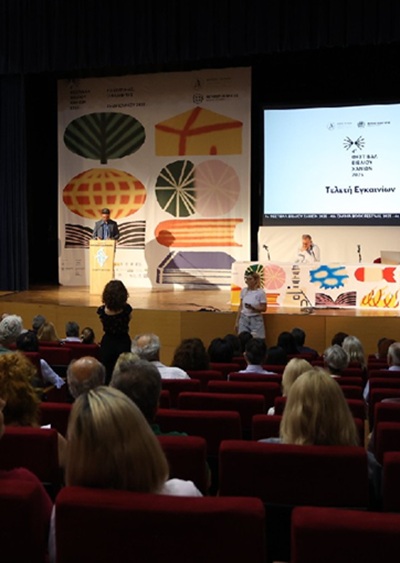


Leave A Comment